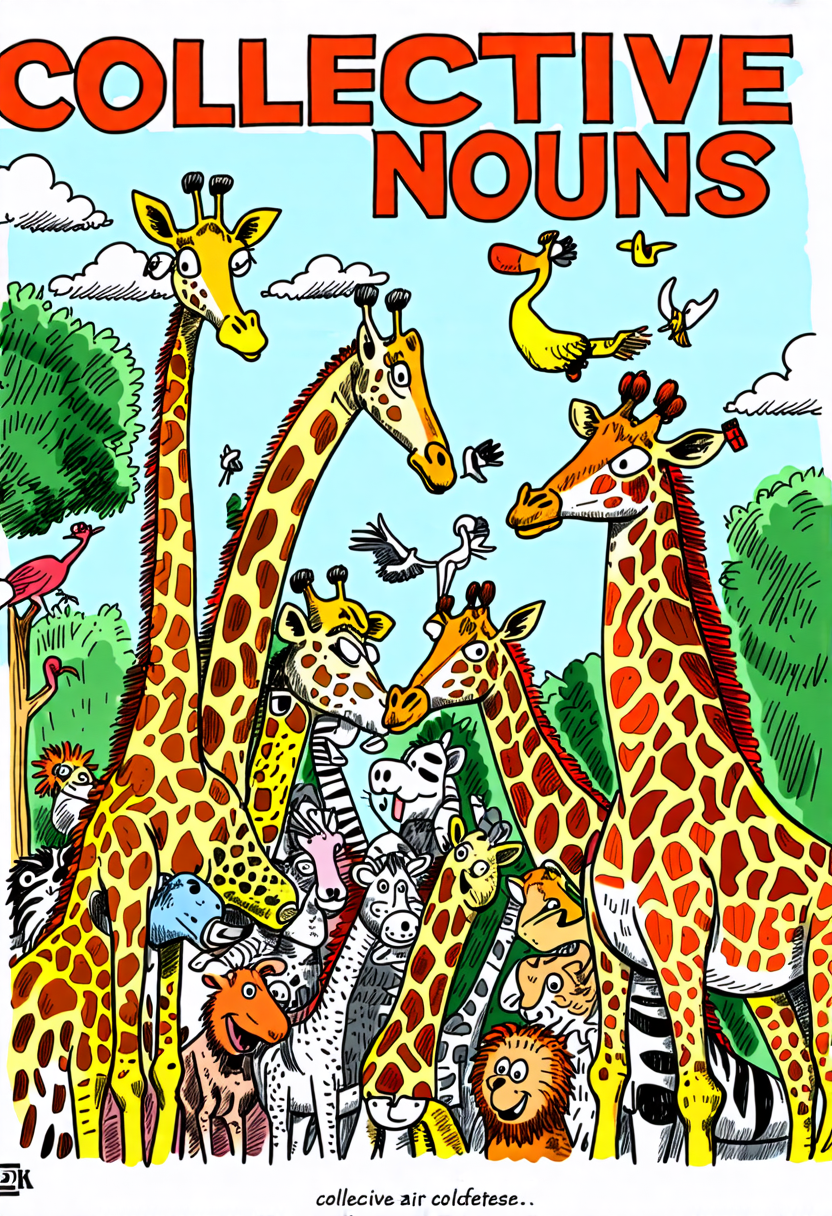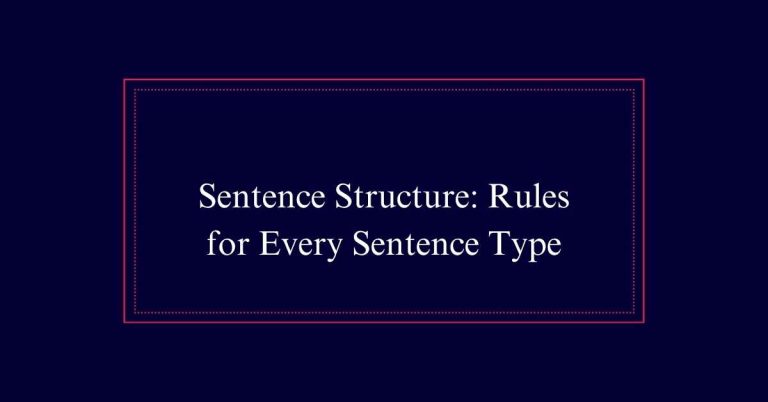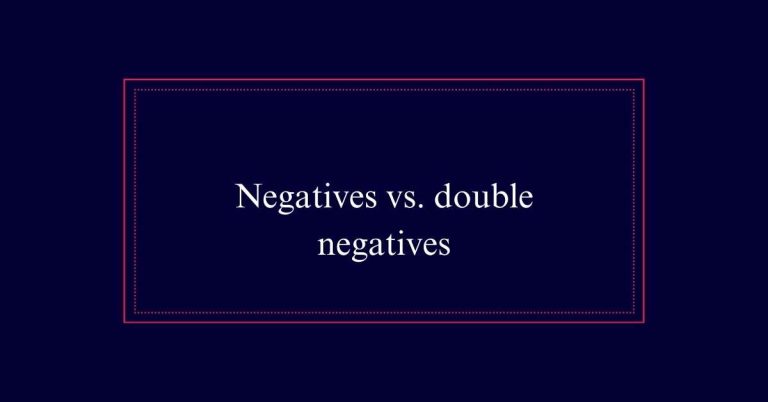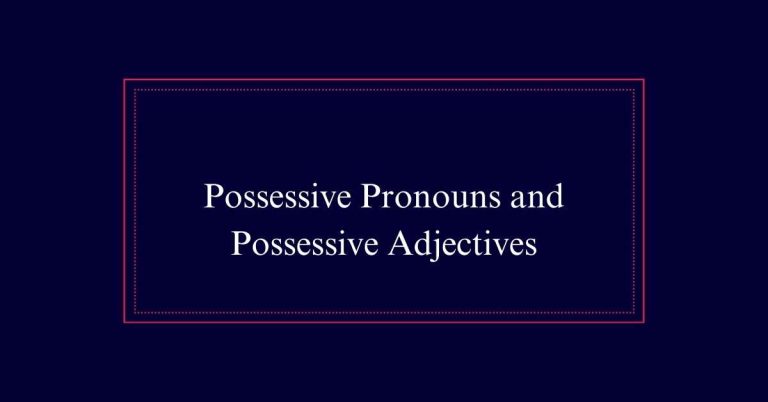Collective Nouns: Definition and Examples
Collective nouns refer to words that represent groups of people, animals, or things as a single entity. They appear singular but describe multiple individuals, like ‘team,’ ‘herd,’ and ‘family.’ Depending on context, these nouns may use singular or plural verbs, especially differing between American and British English. Common examples include ‘staff,’ ‘jury,’ and ‘audience.’
Definition of Collective Nouns
A collective noun is a term used to describe a group of individuals, animals, or items considered as a single unit. These nouns group entities to be referred to collectively. Common examples include ‘audience,’ ‘flock,’ ‘team,’ ‘family,’ and ‘choir.’ Each represents multiple components acting together as one entity.
Collective nouns are often used to simplify communication and highlight the unity of the group. They are essential in both written and spoken language, providing clarity and efficiency. For instance, instead of listing each member of a team, one can simply refer to the ‘team.’
Singular or Plural Usage
Understanding the singular or plural usage of collective nouns can be challenging but is crucial for clear communication. Collective nouns, though singular in form, can be treated as singular or plural based on context. In American English, collective nouns usually take singular verbs. However, when emphasizing individual members, a plural verb may be used. For consistency, make sure the pronouns agree with the chosen verb form.
| Usage Type | Example |
|---|---|
| Singular | The team is winning. |
| Plural | The team are arguing among themselves. |
| Consistency | The committee was divided in its decision. |
American Vs. British English
Differences in the treatment of collective nouns between American and British English can lead to confusion for writers and readers alike. In American English, collective nouns usually take singular verbs, while British English often uses plural verbs.
Here are four key differences:
- Verb Agreement: Americans say ‘The team wins,’ while Brits say ‘The team win.’
- Pronoun Use: In the U.S., ‘The jury gives its verdict.’ In the UK, ‘The jury give their verdict.’
- Context Matters: Americans emphasize unity, using singular; Brits highlight individual actions, using plural.
- Exceptions: Some nouns like ‘police’ are always plural in both dialects.
Lean Toward Singular
In American English, collective nouns are generally treated as singular to emphasize the group as a single unit. This approach highlights the collective nature of the group rather than its individual members.
For example, ‘The team wins the game’ uses a singular verb ‘wins’ to show that the team acts as one entity. This rule applies to most collective nouns like ‘family,’ ‘committee,’ and ‘audience.’
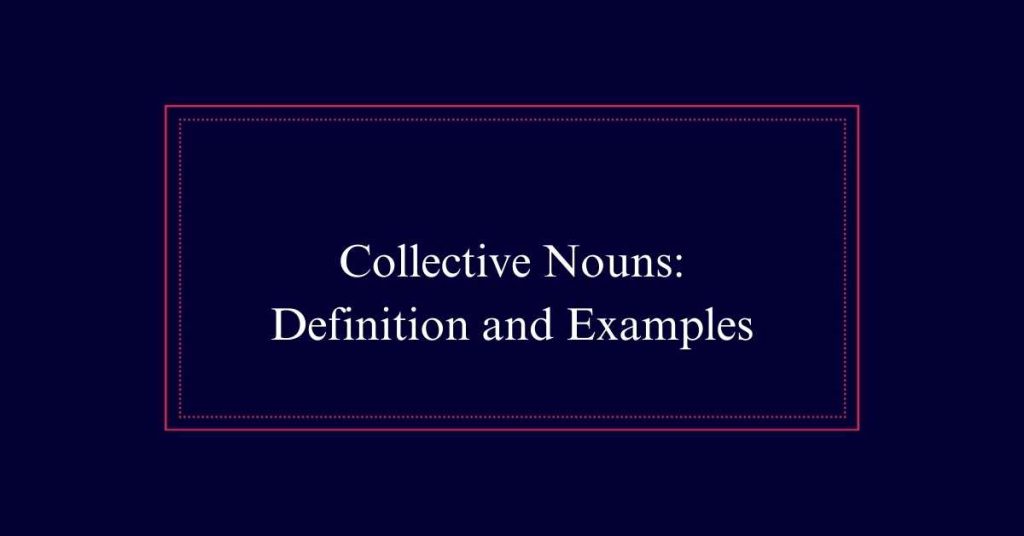
However, exceptions exist, such as ‘police,’ which always takes a plural verb. Adopting the singular form guarantees consistency and clarity in writing. Remember to match your pronouns and verbs in number, keeping the collective noun as the reference point.
Making the Subject Plural
When a collective noun sounds awkward with a singular verb, consider changing the subject to a plural form. This adjustment can make your sentences clearer and more natural.
For example, instead of writing ‘The jury was divided,’ you might say ‘The members of the jury were divided.’ This method helps avoid confusion and guarantees fluidity in your writing.
Here are some examples to guide you:
- ‘The team was winning’ can become ‘The players on the team were winning.’
- ‘The family is traveling’ can be changed to ‘The members of the family are traveling.’
- ‘The audience claps’ can be revised to ‘The people in the audience clap.’
- ‘The committee decides’ can transform into ‘The members of the committee decide.’
Consistent Usage Tips
Maintaining consistent usage of collective nouns guarantees clarity and coherence in your writing. To achieve this, decide whether you will treat collective nouns as singular or plural at the outset. Stick to this choice throughout your text.
For instance, if you choose to use a singular verb with a collective noun (e.g., ‘The team is ready’), continue doing so. Avoid switching to a plural verb later (e.g., ‘The team are ready’). Similarly, make sure pronouns agree in number. If you refer to ‘the committee,’ use ‘it’ consistently, not ‘they’.
Consistency reduces confusion and maintains a smooth flow. Always review your writing to make sure you have applied your chosen approach uniformly. This practice enhances readability and professionalism.
Common Collective Nouns
Common collective nouns frequently appear in everyday language to describe groups of similar entities. These nouns help us communicate more efficiently by grouping related items.
Here are some common examples:
- Team: Refers to a group of people working together towards a common goal.
- Class: Denotes a group of students or learners.
- Committee: Indicates a group of individuals appointed for a specific function or task.
- Family: Represents a group of related individuals, typically parents and their children.
Using these collective nouns correctly can enhance the clarity of communication. They simplify speech and writing by condensing multiple items into a single term. This makes them indispensable in both everyday conversation and professional contexts.
Animal Group Names
Animal group names, also known as collective nouns for animals, describe specific groups of creatures in a concise way. These terms often evoke vivid imagery and emotional connections. For instance, a “murder of crows” conjures a dark, ominous scene, while a “charm of finches” suggests something delightful and enchanting. Such names not only enrich language but also enhance our emotional engagement with the natural world.
Here are some evocative examples:
| Animal | Group Name |
|---|---|
| Crows | Murder |
| Lions | Pride |
| Dolphins | Pod |
People Group Names
People group names, also known as collective nouns for groups of people, help to describe and categorize various assemblies in a precise manner. Such terminology is useful in both spoken and written communication to avoid redundancy and enhance clarity.
Here are some common examples:
- Team: Used to describe a group of people working together towards a common goal.
- Class: Refers to a group of students taught together.
- Committee: Denotes a group of people appointed for a specific function.
- Crowd: Describes a large number of people gathered in one place.
Object Group Names
When referring to collections of objects, specific collective nouns can provide clarity and precision in communication. These nouns help to categorize and simplify the discussion of multiple items. For instance, a ‘set’ of tools or a ‘bundle’ of sticks allows for concise expression. Using object group names guarantees that conversations and writings are more structured and comprehensible.
Below is a table with common collective nouns for objects:
| Collective Noun | Examples |
|---|---|
| Set | Tools, dishes |
| Bundle | Sticks, papers |
| Stack | Books, chairs |
| Collection | Stamps, coins |
| Pack | Cards, cigarettes |
